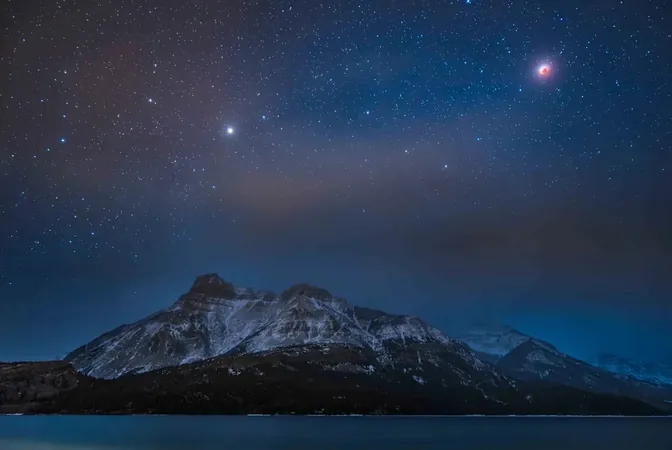
Don't Miss the Spectacular 'Blood Moon' Total Eclipse—One of the Longest in Decades!
2025-09-04
Author: Ming
Mark your calendars for September 7-8! A breathtaking total lunar eclipse, often dubbed a 'blood moon,' will transform the moon from its usual silver hue to a captivating red as it slips into Earth’s shadow. Although Western audiences in the Americas will miss this celestial phenomenon, a staggering 82 minutes of totality will be visible across much of the Eastern Hemisphere, offering nearly six billion people a front-row seat to this enchanting event!
What Exactly Happens During a Lunar Eclipse?
A lunar eclipse occurs when Earth positions itself perfectly between the sun and the moon, casting a shadow over the lunar surface. As the moon enters the darker, central part of Earth’s shadow—known as the umbra—it takes on that iconic coppery glow we love. Since the moon’s orbit is tilted, these captivating events don’t happen every month; they only occur two to three times a year, and viewers on one hemisphere get the best seats.
The Science Behind the 'Blood Moon' Effect
So why is the moon bathed in red light during a total lunar eclipse? It's all about light refraction! As sunlight passes through Earth’s atmosphere, it scatters the blue wavelengths and allows the red hues through, giving it that unmistakable ‘blood moon’ look. Based on current atmospheric conditions, we're expecting a bright orange-red hue for this event—perfect for skywatchers!
Key Moments to Watch
This September's eclipse is totally immersive. The entire eclipse spans about five and a half hours, with key moments occurring as follows (in Universal Time): - Penumbral Eclipse Begins: 15:28 UTC - Partial Eclipse Begins: 16:27 UTC - Total Eclipse Begins: 17:30 UTC - Greatest Eclipse: 18:11 UTC - Total Eclipse Ends: 18:52 UTC - Partial Eclipse Ends: 19:56 UTC - Penumbral Eclipse Ends: 20:55 UTC The highlight? The 82 minutes of totality—one of the longest durations of the decade!
Where to Witness This Celestial Marvel
While those in North and South America won’t be able to catch a glimpse due to daytime, stargazers in Asia and Western Australia will enjoy the show throughout the night. Europe and Africa will see the full moon rise shortly after sunset as the eclipse unfolds. This means millions worldwide will have the incredible chance to observe the blood moon first-hand!
How to Experience This Eclipse
No special glasses required! All you need is a clear, dark sky to enjoy the lunar eclipse. Use a smartphone or digital camera on a tripod to capture stunning shots of the moon, focusing on shorter exposures to highlight its features against the nighttime landscape. For those looking for an even closer view, binoculars or small telescopes will reveal craters and mountains glowing in the eerie red light.
Get Ready for More Night Sky Wonders!
During the eclipse, the moon's shadow will let the stars twinkle even brighter. Look out for Saturn, a bright yellow dot near the moon, and possibly the faint blue-green dot of Neptune, the most distant major planet. Can’t make it outside? Don't worry! Follow the action live online with The Virtual Telescope Project.
If you miss this celestial event, the next lunar eclipse is on March 2-3, 2026, and it'll be visible across vast regions including Eastern Europe, Asia, Australia, and parts of the Americas. Prepare for the next sky show!



 Brasil (PT)
Brasil (PT)
 Canada (EN)
Canada (EN)
 Chile (ES)
Chile (ES)
 Česko (CS)
Česko (CS)
 대한민국 (KO)
대한민국 (KO)
 España (ES)
España (ES)
 France (FR)
France (FR)
 Hong Kong (EN)
Hong Kong (EN)
 Italia (IT)
Italia (IT)
 日本 (JA)
日本 (JA)
 Magyarország (HU)
Magyarország (HU)
 Norge (NO)
Norge (NO)
 Polska (PL)
Polska (PL)
 Schweiz (DE)
Schweiz (DE)
 Singapore (EN)
Singapore (EN)
 Sverige (SV)
Sverige (SV)
 Suomi (FI)
Suomi (FI)
 Türkiye (TR)
Türkiye (TR)
 الإمارات العربية المتحدة (AR)
الإمارات العربية المتحدة (AR)